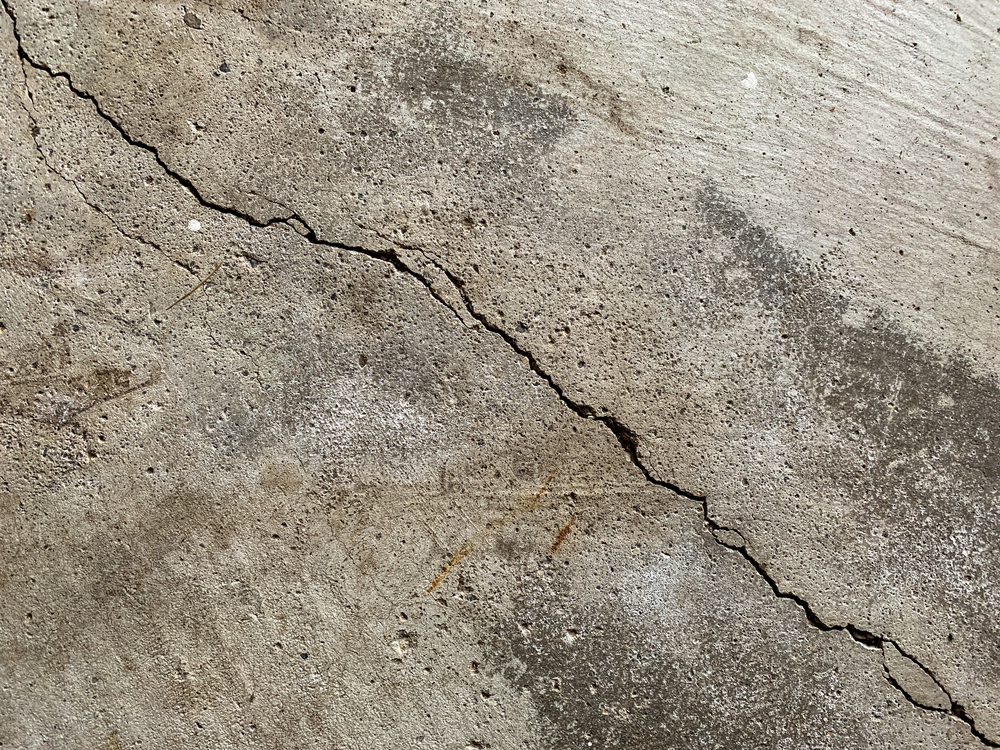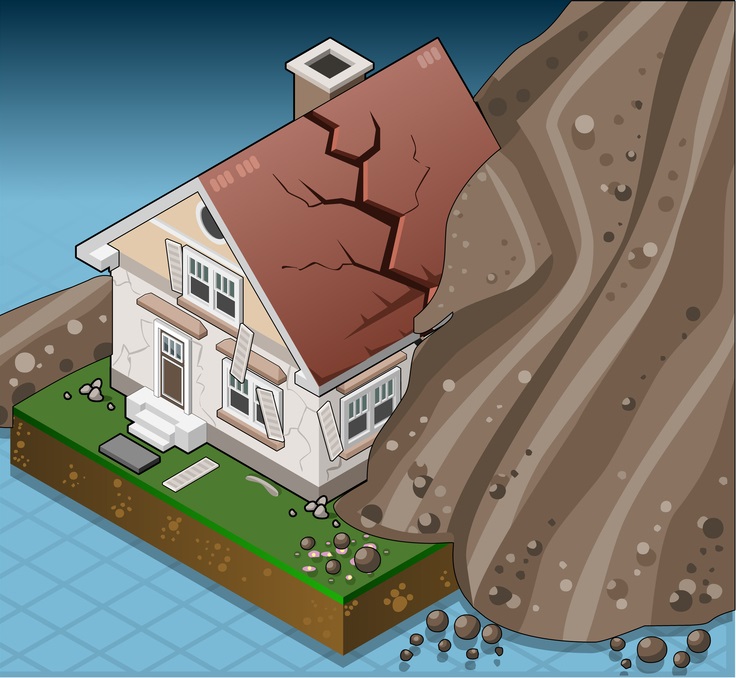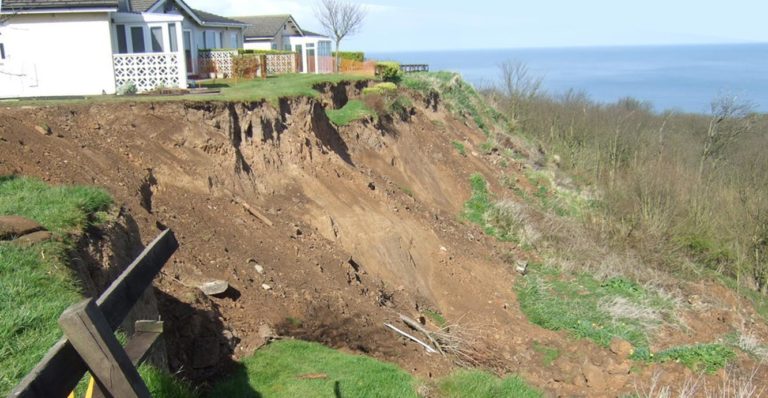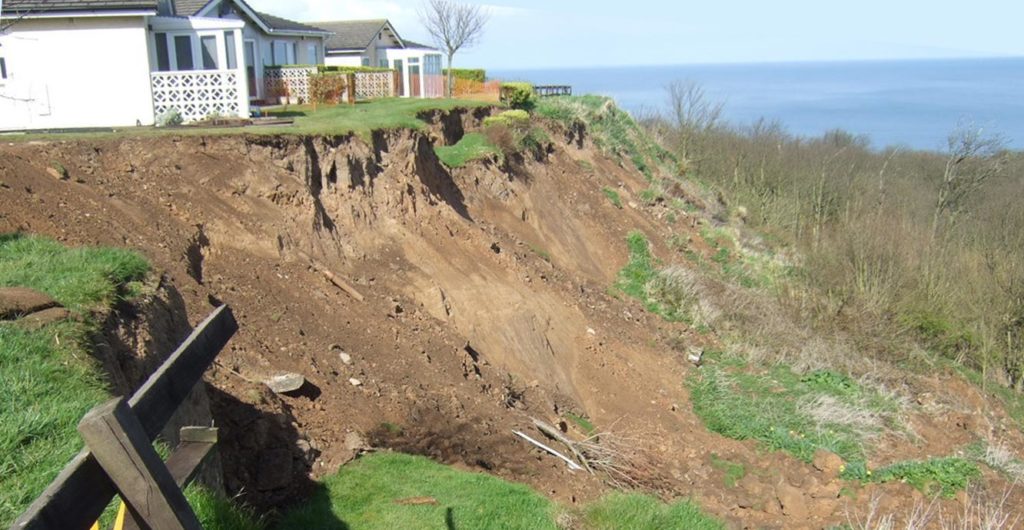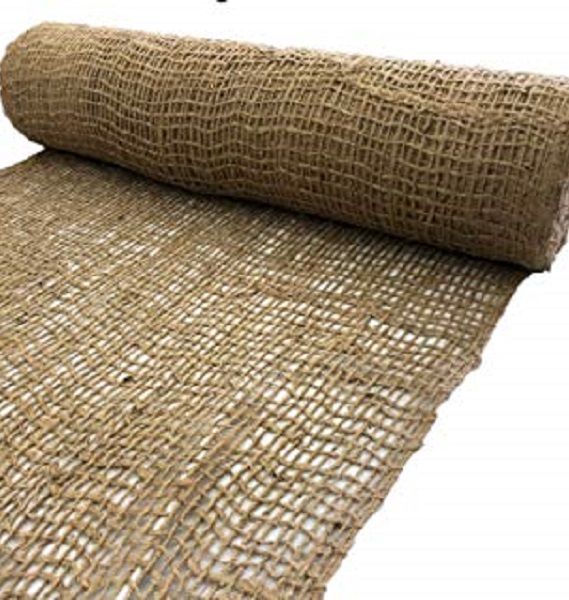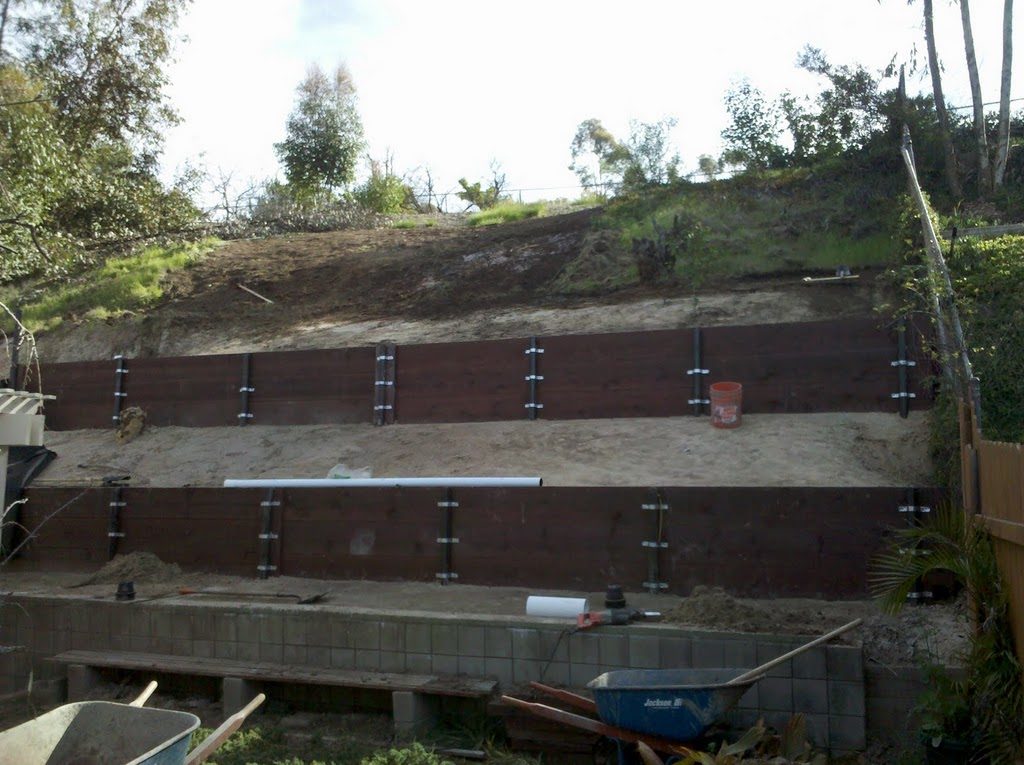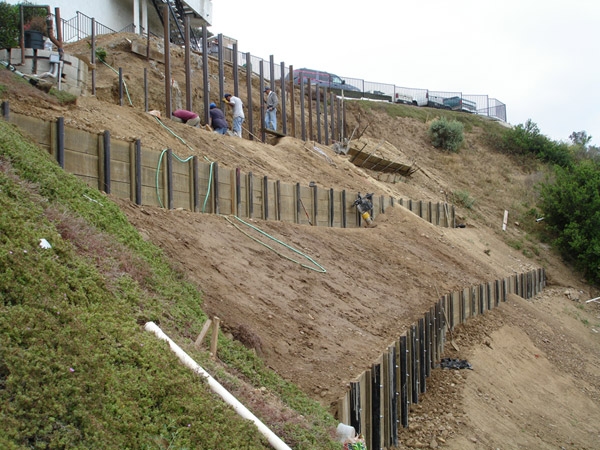Your Guide to Crawl Space Foundation Inspection Success
Your Complete Guide to Concrete Slab Foundation Inspection
Checking your home’s concrete slab foundation isn’t just about peace of mind—it’s a must-do to keep the place you love safe and sound. A solid Concrete Slab Foundation Inspection can spotlight early signs of trouble, saving you from headaches and hefty repair bills down the line.
We’re talking serious business here—like spotting hairline cracks before they turn into chasms or catching drainage issues that could make your house sink. Unlimited Drilling steps up with expert eyes that know exactly where to look. They give it to you straight, whether it’s diagnosing bowed walls or measuring how level your floors are.
This read will equip you with everything you need—from recognizing red flags around your property to understanding what goes on during an inspection by pros like Unlimited Drilling. Knowledge is power, especially when it comes to keeping your home structurally sound.
Misleading Signs
While there are clear signs of foundation issues that require immediate attention, it’s important to note that not all symptoms are indicative of a serious problem. Some cracks may be superficial and not pose a threat to the structural integrity of your concrete slab foundation. It’s crucial to consult with a professional to accurately assess the situation and determine the appropriate course of action.
Table Of Contents:
- The Importance of Professional Evaluation
- Identifying Common Symptoms of Foundation Distress
- In-Depth Look at the Inspection Process
- Costs Associated with Concrete Slab Inspections
- Conclusion
The Importance of Professional Evaluation
When it comes to the safety and longevity of your property, cutting corners is not an option. That’s why calling in experts like Unlimited Drilling for a professional foundation inspection is more than just a smart move; it’s essential for peace of mind.
Why Rely on Structural Engineers?
A structural engineer brings expertise that goes beyond surface-level assessments. They have the training to identify foundation issues that might escape the untrained eye. This specialized knowledge can save you from costly repair costs down the line by catching problems early.
Structural engineers use their skills to pinpoint exactly what needs fixing – and what doesn’t – ensuring every dollar you invest into repairs goes precisely where it should.
Digging Deeper with Professional Foundation Inspection
An expert evaluation is about spotting cracks and uneven floors. It’s an investigation into your home’s very backbone. Using tools and techniques honed over years, professionals assess visible signs and underlying conditions that could spell trouble.
This thorough approach means potential issues are identified before they escalate, saving homeowners time, stress, and money. And when Unlimited Drilling steps onto your property for an inspection, they bring over 35 years of industry experience with them—experience that translates into reliability you can trust.
Navigating Repair Costs Effectively
No one likes surprises when it comes to expenses. A professional assessment gives a clear picture of what repairs may be needed—and how urgent they are—which helps plan financially for any necessary work without being blindsided by sudden demands on your wallet.
Moreover, understanding repair costs upfront allows you to weigh options sensibly rather than making rushed decisions under pressure if significant damage surfaces unexpectedly later on.
Finding Peace Through Precision
Sometimes symptoms suggest major problems but actually reflect minor concerns—or vice versa. For instance: diagonal cracks or doors refusing to latch properly scream “foundation problem,” yet only a seasoned inspector can tell whether these signs point toward serious trouble or if there’s a simple fix within reach (without tearing apart walls). Learn about true indicators that need attention.
By enlisting professionals who specialize in pier foundations, as well as slab types, Unlimited Drilling ensures comprehensive coverage regardless of which base supports your home. From inspecting basement extends beneath ground level up through beams supporting upper stories—no stone remains unturned.
Remember: recognizing warning signals often starts at first glance—a door frame slightly askew here…an unusual bulge there. But, fully grasping implications requires delving deeper than mere appearances allow. So, keep a sharp eye out for these subtle hints and be ready to investigate further when something seems off; it’s the attention to detail that makes the difference.
Don’t skimp on safety; a pro foundation inspection is key for your peace of mind. Experts spot the small stuff, saving you big bucks and stress down the road.
A structural engineer’s eye catches hidden issues early, meaning less surprise repair costs later. Unlimited Drilling? They’ve got 35 years of know-how to back up their thorough checks.
Knowing potential repair needs upfront lets you budget smart—not get hit with unexpected bills. And remember, tiny clues can signal big problems, so trust pros like Unlimited Drilling to dig deep and give you the real scoop.
Identifying Common Symptoms of Foundation Distress
Your home’s foundation is its bedrock, but when it shows signs of distress, you’ve got a ticking time bomb under your feet. Spotting the early warning signals saves you from future headaches and wallet woes. Let’s dig into what screams trouble for your concrete slab.
Misleading Signs Homeowners Worry About
Sometimes, what looks like a disaster in waiting might just be cosmetic. It’s common to see sloping floors in older homes; they add character without necessarily compromising structure. And those hairline cracks spider-webbing across your basement walls? They often stem from simple settling – not quite the red flag we make them out to be.
Bowed walls could send anyone into panic mode because let’s face it – no one wants their living room resembling a funhouse attraction. But before calling in the cavalry, know that some bowing is just benign bulging due to hydrostatic pressure or seasonal changes.
Larger fissures do raise eyebrows though—especially if it’s diagonal cracks stretching over half an inch wide on interior walls or around doorframes where doors won’t latch properly anymore—that’s when alarm bells should ring loud and clear.
True Signs of Foundation Issues
The real deal-breakers are less about aesthetics and more about integrity. Think structural stability here folks. If there’s noticeable slab shifting that’s causing gaps between floorboards, or if previously snug windows now have breezy new drafts—bingo. You’ve hit upon classic symptoms that indicate potential issues beneath your house foundation. These are worth investigating further by professionals with decades-strong track records like Unlimited Drilling who understand this game inside out.
An uneven ground level outside or unexplained moisture seeping up through crawl spaces also spells trouble. It points toward possible drainage problems and if left unchecked can erode soil that support pier foundations. This can lead to dreaded settlement shifts down the line—a definite cue for an immediate inspection.
Digging Deeper: Inspection Necessities
To truly safeguard your home and legacy, a meticulous foundation inspection is paramount. This process demands an expert’s eye—professionals who can spot the faintest signs of trouble that most would overlook. It’s about being proactive rather than reactive; catching issues early on to avoid costly repairs down the line. Remember, it’s not just about stability today but ensuring safety for years to come.
Don’t ignore the little signs. Early detection of foundation issues like gaps in floorboards or drafts around windows can save you big money and stress. Call in seasoned pros to catch sneaky symptoms before they turn into major problems.
In-Depth Look at the Inspection Process
When it comes to keeping your house foundation in top shape, there’s nothing quite like a thorough concrete slab foundation inspection. This isn’t just a once-over. We’re talking about a deep dive that looks into every nook and cranny to catch even the sneakiest of issues.
Assessing Exterior Indicators
The exterior check is where we roll up our sleeves and get down to business. Inspectors will scan for common problems, looking at how well your ground level holds up against Mother Nature’s mood swings. They’ll scrutinize everything from crawl space conditions to drainage patterns because let’s face it—water can be as sneaky as a cat burglar when it wants to get inside your home.
We’re not just eyeing for obvious signs; this process includes hunting down those subtle cues too—like hairline cracks that could tell tales of future woes or slab shifting acting out its own version of plate tectonics right beneath your feet.
Interior Examination Tactics
Inside, inspectors shift their focus but keep their detective hats on tight. They’ll gauge how level the floor is with tools so precise they’d make Sherlock Holmes envious. Wall cracks? They’ll track them down faster than you can say ‘foundation issue.’ But wait, there’s more—they also ensure basement walls are standing strong and aren’t playing Jenga with the structural integrity of your place.
An interior look-around might feel invasive—like having someone rummage through your closet—it’s all worth it when potential issues hide in plain sight. Think doors sticking out are worse than sore thumbs or windows begging for freedom because they refuse to close properly—it all points back to what lies beneath: Your foundation.
Description: Key Stats and Insights
You know how some things sound better with numbers? Well here goes: A typical inspector check might take15 minutes if you’re lucky—or way longer if they’ve got their magnifying glass out searching high-and-low across both interior elements and beyond—the whole shebang really depends on who you call upon.
The importance? With over three decades backing our expertise in sniffing out trouble before it gets real nasty—we’ve seen diagonal wall warriors causing mischief along foundations more times than we care to count. We can spot the smallest problem details quickly without sacrificing the inspection.
Average Cost Considerations
- If you’re hoping these sleuth-like services come free-of-charge—you’re half-right. For property owners calling dibs on inspections, this usually means zero dimes spent (that’s right—a free estimate).
- But if ownership isn’t clearly established, it can lead to disputes and confusion down the line.
A thorough concrete slab foundation inspection is like detective work, digging deep into your home’s exterior and interior for signs of trouble. It can reveal sneaky issues, ensure stability, and even though it might feel invasive, catching problems early saves you big time.
Costs Associated with Concrete Slab Inspections
If you’re worried about the stability of your house foundation, it might be time to check out that concrete slab. But hey, don’t let inspection costs catch you off guard. We’re here to break down what homeowners can expect when investing in a thorough concrete slab foundation inspection.
Average Cost and Free Estimate Options
The good news is many companies offer free estimates for property owners looking to get their foundations checked. That’s right – no strings attached. This usually means an expert will swing by, take a look at your situation, and give you the lowdown on whether or not there’s trouble brewing under your feet. Now if you’re not the owner but still need an inspection done? Expect fees typically ranging from $150 to $200.
But remember, even though initial assessments are often on the house (pun intended), detailed investigations could come with extra charges depending on how deep they dig into the potential issues.
Importance of Being Present During Estimates
Show up during these checks. Why? Because professionals from Unlimited Drilling aren’t just going through a checklist—they want your input too. Got past plumbing nightmares or drainage drama? Spill it. Sharing this info helps them make sure nothing gets missed because we all know that old problems can cause new headaches real fast.
Here’s some insider advice: If doors around your home have been acting more stubborn than usual or diagonal cracks are showing up uninvited—it’s definitely worth calling in pros like Unlimited Drilling who have more than three decades of experience uncovering sneaky signs of foundation distress.
In-depth Inspection Costs When Issues Arise
Sometimes things look fishy enough that a deeper dive is necessary—that’s where repair estimates come into play. These inspections go beyond surface-level evaluations and start piecing together what exactly is causing any hairline cracks or why that slab seems like it’s shifting its stance ever so slightly each year.
A concrete slab foundation inspection is a vital step in ensuring the safety and stability of your home. By recognizing the true signs of foundation issues and seeking professional evaluation, you can address any problems early on and prevent costly repairs in the future. Don’t wait until it’s too late—consider splurging for peace of mind knowing everything structurally sound beneath those walls.
Don’t get blindsided by inspection fees—free estimates are often available, but a deeper dive could cost extra. Show up and share your home’s history to help the pros spot every issue.
A pro tip: watch for stubborn doors and unwanted cracks as telltale signs of foundation woes. Remember, investing in a detailed check-up now can save you from costly repairs later.
Conclusion
Wrapping up, a thorough Concrete Slab Foundation Inspection is key. It’s about spotting the subtle hints—cracks that whisper of deeper issues or doors that rebel against their frames. These are your clues.
Take these insights to heart. They’re not just tips; they’re lifelines for your home’s health and your wallet’s wellbeing.
Dig in with pros like Unlimited Drilling when you notice something off. Remember, early detection can mean the difference between an easy fix and a major overhaul.
You’ve got this now—the knowledge to stand on solid ground. Keep vigilant, stay informed, and take action when needed. That’s how you protect your haven.
concrete slab foundation inspection
How to Prevent Landslides
Landslide Repair
How a Retaining Wall Helps with Landslide Prevention
Common Causes Of Residential Landslides
What To Expect After Foundation Repair: A Homeowner’s Guide
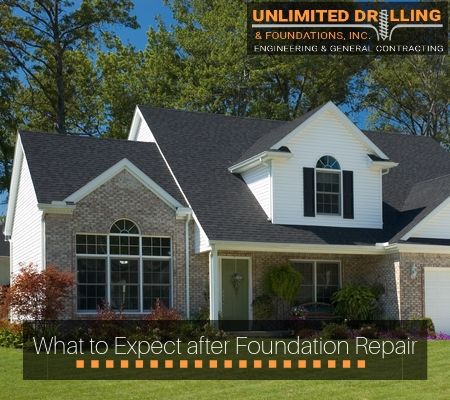
One of the major problems that people face is with the pipes. If they had been affected, it is advisable to call a plumbing service. They will check if the pipes are in good condition so that there is no risk of leaks. You should also inspect some of the parts of the wall where any pipes or AC units may have had to be moved for repairs. Call a painter and decorator to deal with that.
When inspecting your walls, you will find that repair leads to other minor complications here and there. Cracks in the drywall may be visible, pipes may be tampered with, and in some cases, doors may not close properly. This is usually caused when settling occurs. Most of these arising problems will fix themselves as the house settles down, but there are those minors ones that may not. This means that some repairs are required a few months after the foundation repair.
Your foundation will need time to adjust completely so do not do any constructions too fast. Such construction may interfere with the integrity of the place. Call Unlimited Drilling if you have any questions on how to handle any extra repairs that you may need once the foundation repair is complete. You will probably need to hire a flooring company to check if the floor is in good condition.
You may have to repair your yard too because the chances are that it was damaged during the repair. Get a landscaper to deal with any new plans you have.
Once you know what to expect after foundation repair, you will be able to budget for it.
How to Know When Your Foundation Needs Repair
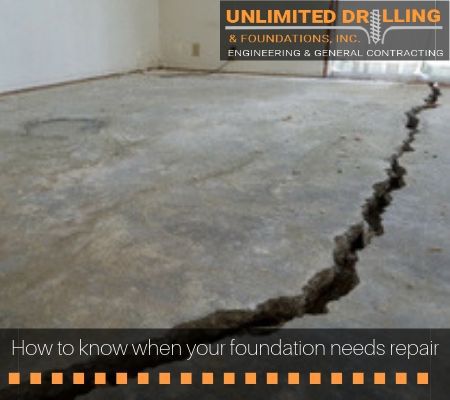
Once you notice that you need the repairs, you need to call a professional service to do it. Only professionals can guarantee good quality of work that you need. Do not try a DIY project or hire a contractor without proper experience. Unlimited Drilling is a professional foundation repair service that you can trust to do all the repairs you need doing. Here are the signs that you need to call Unlimited Drilling.
One, if you notice cracks on your foundation. This usually means that the soil underneath the foundation is settling so the process is creating soil pockets. Check how far the cracks go and call the professionals to handle it. The cracks are often large and zigzag, and they are spread out over a large part of the floor or walls.
You will also need to pay attention to the windows and doors. If there are gaps between the wall and the windows or doors, then it means that there is a need for foundation repair. Bulging windows or those that refuse to close also mean the same.
Damage to your roofline is also an indication that your foundation needs repair. If you notice that the roofline is sagging, then you need to call Unlimited Drilling to check the foundation. You can view the roofline from a distance to see if it looks like it has sunk in the middle.
Foundation repair needs to be handled quickly before the issue becomes too hard to deal with. Failure to check it immediately means that you will have to pay more for rebuilding.

